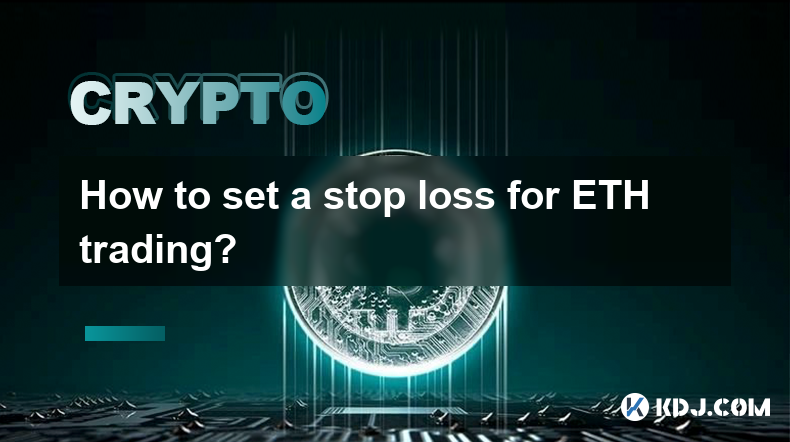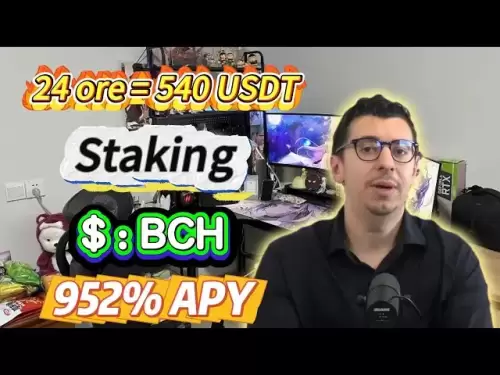-
 Bitcoin
Bitcoin $108,703.4836
0.45% -
 Ethereum
Ethereum $2,576.6839
1.58% -
 Tether USDt
Tether USDt $1.0001
0.00% -
 XRP
XRP $2.2924
-0.87% -
 BNB
BNB $660.2136
0.01% -
 Solana
Solana $151.4729
-0.29% -
 USDC
USDC $1.0000
0.00% -
 TRON
TRON $0.2866
0.04% -
 Dogecoin
Dogecoin $0.1698
0.82% -
 Cardano
Cardano $0.5831
0.13% -
 Hyperliquid
Hyperliquid $37.9814
-3.97% -
 Bitcoin Cash
Bitcoin Cash $503.9489
1.93% -
 Sui
Sui $2.8994
0.74% -
 Chainlink
Chainlink $13.5429
0.38% -
 UNUS SED LEO
UNUS SED LEO $9.0693
-0.19% -
 Stellar
Stellar $0.2524
0.15% -
 Avalanche
Avalanche $18.1959
1.02% -
 Shiba Inu
Shiba Inu $0.0...01180
1.48% -
 Toncoin
Toncoin $2.7601
-0.76% -
 Hedera
Hedera $0.1606
0.96% -
 Litecoin
Litecoin $86.6105
0.26% -
 Monero
Monero $315.7691
-0.56% -
 Polkadot
Polkadot $3.3911
0.25% -
 Dai
Dai $1.0001
0.03% -
 Ethena USDe
Ethena USDe $1.0002
0.02% -
 Bitget Token
Bitget Token $4.3076
-0.05% -
 Uniswap
Uniswap $7.5901
3.66% -
 Aave
Aave $288.0954
0.35% -
 Pepe
Pepe $0.0...01002
1.64% -
 Pi
Pi $0.4578
0.09%
How to set a stop loss for ETH trading?
Setting a stop loss for ETH trading is essential for risk management, helping limit losses by automatically selling at a predetermined price on supported exchanges.
Apr 18, 2025 at 12:22 pm

Setting a stop loss for ETH trading is a crucial risk management strategy that helps traders limit potential losses. A stop loss order is an instruction to sell a cryptocurrency when it reaches a certain price, thereby preventing further losses if the market moves against your position. In this article, we will explore the detailed steps and considerations for setting a stop loss for ETH trading.
Understanding Stop Loss Orders
Before diving into the specifics of setting a stop loss for ETH, it's important to understand what a stop loss order is. A stop loss order is a type of order that automatically sells your asset when its price falls to a predetermined level. This order type is designed to help traders manage risk by capping the potential loss on a position. For ETH trading, setting a stop loss can be particularly useful given the cryptocurrency's volatility.
Choosing the Right Exchange
To set a stop loss for ETH, you need to use a cryptocurrency exchange that supports this feature. Not all exchanges offer stop loss orders, so it's crucial to choose one that does. Popular exchanges like Binance, Coinbase Pro, and Kraken support stop loss orders. Once you have selected an exchange, you will need to ensure that you have an account set up and funded with ETH.
Setting Up a Stop Loss Order
Setting up a stop loss order involves several steps. Here's a detailed guide on how to do it:
- Log into your exchange account: Access your account on the chosen exchange.
- Navigate to the trading section: Find the section where you can trade ETH. This is usually labeled as "Trade" or "Exchange".
- Select ETH trading pair: Choose the ETH trading pair you want to set the stop loss for, such as ETH/USD or ETH/BTC.
- Place a stop loss order: Look for the option to place a stop loss order. This might be labeled as "Stop Loss" or "Stop Order".
- Set the stop price: Enter the price at which you want the stop loss to trigger. For example, if you bought ETH at $3,000 and want to limit your loss to 10%, you would set the stop price at $2,700.
- Set the order type: Decide whether you want a stop-limit order or a stop-market order. A stop-limit order will sell your ETH at a specified limit price once the stop price is reached, while a stop-market order will sell at the best available market price.
- Review and confirm: Double-check all the details of your order, including the stop price and order type, and then confirm the order.
Considerations for Setting a Stop Loss
When setting a stop loss for ETH, there are several factors to consider to ensure it aligns with your trading strategy:
- Volatility: ETH is known for its high volatility. Setting a stop loss too close to the current price may result in the order being triggered by normal market fluctuations. Consider setting a wider stop loss to account for this volatility.
- Market conditions: Be aware of the current market conditions. If the market is particularly volatile or undergoing a significant event, you may need to adjust your stop loss accordingly.
- Risk tolerance: Your stop loss should reflect your risk tolerance. If you are more risk-averse, you might set a tighter stop loss, while a more aggressive trader might set a wider one.
- Position size: The size of your position can also influence your stop loss. Larger positions may warrant a more conservative stop loss to manage risk effectively.
Monitoring and Adjusting Your Stop Loss
Once you have set a stop loss for your ETH position, it's important to monitor and adjust it as needed. Market conditions can change rapidly, and what was a suitable stop loss at one point may no longer be appropriate. Here are some tips for monitoring and adjusting your stop loss:
- Regularly review your positions: Check your ETH positions regularly to ensure your stop loss is still aligned with your trading strategy.
- Adjust based on price movements: If ETH's price moves significantly in your favor, you might consider adjusting your stop loss to lock in some profits.
- Stay informed: Keep up with market news and events that could impact ETH's price. This can help you make informed decisions about adjusting your stop loss.
Common Mistakes to Avoid
When setting a stop loss for ETH trading, there are several common mistakes that traders should avoid:
- Setting the stop loss too tight: As mentioned earlier, setting a stop loss too close to the current price can result in it being triggered by normal market fluctuations.
- Ignoring market conditions: Failing to consider current market conditions can lead to a stop loss that is not suitable for the current environment.
- Not adjusting the stop loss: Failing to adjust your stop loss as market conditions change can result in missed opportunities to lock in profits or limit losses.
- Over-reliance on stop losses: While stop losses are a valuable tool, they should not be the only risk management strategy you use. Consider using other tools like take profit orders and position sizing.
FAQs
Q: Can I set a stop loss on all cryptocurrency exchanges?
A: No, not all cryptocurrency exchanges support stop loss orders. It's important to check whether your chosen exchange offers this feature before attempting to set a stop loss.
Q: What is the difference between a stop-limit order and a stop-market order?
A: A stop-limit order will sell your ETH at a specified limit price once the stop price is reached, while a stop-market order will sell at the best available market price. Stop-limit orders give you more control over the selling price but may not be executed if the market price moves too quickly. Stop-market orders are more likely to be executed but may result in a less favorable selling price.
Q: How often should I adjust my stop loss?
A: The frequency of adjusting your stop loss depends on your trading strategy and market conditions. It's a good practice to review your positions regularly and adjust your stop loss as needed to reflect changes in the market or your trading goals.
Q: Can a stop loss guarantee that I won't lose more than a certain amount?
A: No, a stop loss cannot guarantee that you won't lose more than a certain amount. In highly volatile markets, the price can gap through your stop loss level, resulting in a larger loss than intended. However, a stop loss is still a valuable tool for managing risk.
Disclaimer:info@kdj.com
The information provided is not trading advice. kdj.com does not assume any responsibility for any investments made based on the information provided in this article. Cryptocurrencies are highly volatile and it is highly recommended that you invest with caution after thorough research!
If you believe that the content used on this website infringes your copyright, please contact us immediately (info@kdj.com) and we will delete it promptly.
- Meme Coins, Early Investment, Parabolic Growth: Catching the Wave
- 2025-07-08 22:30:12
- Crypto, Institutions, BTC & ETH: A New Era Dawns
- 2025-07-08 22:30:12
- Bitcoin Solaris Market Launch: A New Dawn or Just Another Altcoin?
- 2025-07-08 20:30:12
- Bitcoin, Memecoin Mania, and the All-Time High Hunt: What's Next?
- 2025-07-08 20:30:12
- Byrq Coin: Scam or Savior? A Deep Dive Review
- 2025-07-08 20:50:12
- Shiba Inu's Burn Rate Bonanza: Can Crypto Burns Ignite a Price Rally?
- 2025-07-08 20:50:12
Related knowledge

How to customize USDT TRC20 mining fees? Flexible adjustment tutorial
Jun 13,2025 at 01:42am
<h3>Understanding USDT TRC20 Mining Fees</h3><p>Mining fees on the TRON (TRC20) network are essential for processing transactions. U...

USDT TRC20 transaction is stuck? Solution summary
Jun 14,2025 at 11:15pm
<h3>Understanding USDT TRC20 Transactions</h3><p>When users mention that a USDT TRC20 transaction is stuck, they typically refer to ...

How to cancel USDT TRC20 unconfirmed transactions? Operation guide
Jun 13,2025 at 11:01pm
<h3>Understanding USDT TRC20 Unconfirmed Transactions</h3><p>When dealing with USDT TRC20 transactions, it’s crucial to understand w...

How to check USDT TRC20 balance? Introduction to multiple query methods
Jun 21,2025 at 02:42am
<h3>Understanding USDT TRC20 and Its Importance</h3><p>USDT (Tether) is one of the most widely used stablecoins in the cryptocurrenc...

What to do if USDT TRC20 transfers are congested? Speed up trading skills
Jun 13,2025 at 09:56am
<h3>Understanding USDT TRC20 Transfer Congestion</h3><p>When transferring USDT TRC20, users may occasionally experience delays or co...

The relationship between USDT TRC20 and TRON chain: technical background analysis
Jun 12,2025 at 01:28pm
<h3>What is USDT TRC20?</h3><p>USDT TRC20 refers to the Tether (USDT) token issued on the TRON blockchain using the TRC-20 standard....

How to customize USDT TRC20 mining fees? Flexible adjustment tutorial
Jun 13,2025 at 01:42am
<h3>Understanding USDT TRC20 Mining Fees</h3><p>Mining fees on the TRON (TRC20) network are essential for processing transactions. U...

USDT TRC20 transaction is stuck? Solution summary
Jun 14,2025 at 11:15pm
<h3>Understanding USDT TRC20 Transactions</h3><p>When users mention that a USDT TRC20 transaction is stuck, they typically refer to ...

How to cancel USDT TRC20 unconfirmed transactions? Operation guide
Jun 13,2025 at 11:01pm
<h3>Understanding USDT TRC20 Unconfirmed Transactions</h3><p>When dealing with USDT TRC20 transactions, it’s crucial to understand w...

How to check USDT TRC20 balance? Introduction to multiple query methods
Jun 21,2025 at 02:42am
<h3>Understanding USDT TRC20 and Its Importance</h3><p>USDT (Tether) is one of the most widely used stablecoins in the cryptocurrenc...

What to do if USDT TRC20 transfers are congested? Speed up trading skills
Jun 13,2025 at 09:56am
<h3>Understanding USDT TRC20 Transfer Congestion</h3><p>When transferring USDT TRC20, users may occasionally experience delays or co...

The relationship between USDT TRC20 and TRON chain: technical background analysis
Jun 12,2025 at 01:28pm
<h3>What is USDT TRC20?</h3><p>USDT TRC20 refers to the Tether (USDT) token issued on the TRON blockchain using the TRC-20 standard....
See all articles

























































































